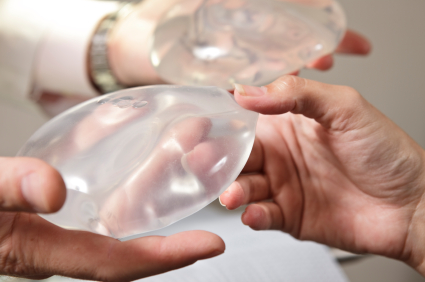
Stricter rules have been approved in Europe that will ensure medical devices now have traceability features and greater safety oversight.
The backing by Members of the European Parliament, which has been informally agreed with the Council, comes after more than four years of intense negotiations following the PIP breast implant and metal-on-metal hip implant scandals, which highlighted the need to better define the legal framework around medical devices.
Now medical devices will require a unique device identifier (UDI) to aid traceability.
The scandal involving defective breast implants affected nearly 400,000 women across the globe and accused French manufacturer Poly Implant Prothese (PIP) of using a dangerous industrial silicon gel for breast implants, instead of the more expensive medical grade gel.
The fraudulent PIP implants were found to have a rupture rate twice the average. But of more concern was the fact that there was no system to identify which patients had received the bogus implants.
Glenis Willmott, of the Socialists and Democrats party and lead negotiator for medical devices in the European Parliament, said the scandal had highlighted weaknesses in the current system and the need for stricter rules.
"With the PIP scandal, many women simply didn't know if they had received defective implants or not," Willmott said. "So, we've introduced a Unique Device Identification system to help trace patients, who will also be given an implant card, which they can use to access information via a publicly accessible database."
Under the new rules, it will be mandatory that every product has a UDI linked to information listed in the new European database of medical devices (EUDAMED).
The implant card and UDI will enable patients and doctors to track which product has been implanted into which patient.
"This will make it easier to trace a device if there is a problem," Willmott said.
As well as the implant card, the new rules will see increased scrutiny on medical devices from design and manufacture through to authorisation and post-market monitoring. This will include: random inspections of facilities for post-market monitoring; additional safety checking for high-risk devices (such as implants, joint replacements or insulin pumps); stricter controls on notified bodies and ensuring they have the relevant expertise; and the requirement that manufacturers provide clinical evidence of medical device safety.
"The new law will ensure that all devices are checked thoroughly before authorisation and carefully monitored after being placed on the market, so if a problem does arise, it will be picked up quickly," Willmott said.
As part of the new regulations, MEPs also approved laws to tighten up information and ethical requirements for in-vitro diagnostic medical devices such as pregnancy kits and DNA tests, with the new rules also applying to these devices.
"We learned the lessons of scandals such as that of defective breast implants," said rapporteur on in-vitro diagnostic medical devices Peter Liese. "Problems have occurred in other areas too – for example, with stents that are implanted into the brain or unreliable HIV tests. The new regulation is good for patients, puts an end to fraudulent and shady producers and thus also strengthens respectable producers."
The new rules also brings the EU industry into line with Unique Device Identifier system in the USA that was introduced in 2013, with phased dates up to 2020 for different types of devices.
Under the US UDI Rule, the UDI on a device label or package is composed of two parts, including: a mandatory, fixed device identifier that identifies the labeller and the specific version or model of the device; and a conditional, variable production identifier such as batch or serial numbers and manufacture and expiration dates.
The UDI is provided in a plain-text version and a machine-readable form that uses automatic identification and data capture technology, such as a bar code, and will be issued under a UDI system operated by an FDA-accredited issuing agency. Device identification information will then be kept in the FDA-administered database GUDID (Global Unique Device Identification Database).
According to the FDA, UDIs can help "improve patient safety, modernise device post-market surveillance, and facilitate medical device innovation". Importantly, it will identify problem devices quickly, more effectively manage recalls, as well as addressing counterfeiting and diversion.
However, implementation in the US has not been smooth, with a number of delays and some opposition by the device industry. At the end of last month, the FDA granted a third extension for soft contact lens labellers for UDI compliance because of agency resource limitations.
The new European regulations, which replace the three existing Directives on medical devices that date back to the 1990s, will come into force by mid-2020.
©
SecuringIndustry.com





